Hi friends,
I’ve finally completed this CVC literacy center packet, and I’m thrilled to share it with you. It’s taken over two weeks to complete it, and it was so big that I had to split it into volumes. This post is all about Volume One and is packed full of fun and engaging activities to get your students learning about, practicing and mastering their short vowel words.
CVC Literacy Centers
This packet features 12 different CVC games which are designed to provide students with hands-on experience with CVC words. All the short vowel sounds are covered as well as all the common word families. Here is an overview of the activities.
1. CVC I Spy
Let’s start with one of my favorites from the packet. This CVC activity is exactly like the I Spy game we all know and love BUT it’s for CVC words. Each mat comes with a list of CVC words that students need to read and locate somewhere on the mat. Once they find it, they circle it using erasable marker and check it off the list.
2. Read and Cover
Read and Cover is a great way for getting students to begin reading CVC words. Each mat features 16 words that students read and then cover with their matching picture. I love that the pictures can be used as scaffolds so that struggling students can use the beginning sound to help them match the pictures to the words.
3. Roll a Word
There is something about huge dice that makes everything so much more exciting. Students roll the dice to form a word. They will find that some words will be real words and others will be nonsense words. There’s a sheet included too for students to record and sort the words they have created.
4. Onset and Rime Puzzle
This puzzle activity is designed for students to begin recognizing the onset and rime contained in CVC words. The purpose of activities such as these is to familiarize students with the group of letters contained in a word family which will, in turn, help them to decode and write new words when reading and writing. The short vowel sounds are color-coded to help students put the word puzzles together.
5. Spell a Word
Students should be provided with multiple opportunities to sound out and spell CVC words and that is the exact purpose of these cards. They work with magnetic letters and erasable marker. It’s a good idea to remind students that a vowel (a, e, i, o, u) is always in the center and all they need to figure out is the beginning and ending consonant.
6. Word Family Match
What’s a good CVC packet without word family matching! Each strip is related to a specific word family and all students must do is match the pictures to their word families. The pictures also come with words in case your students require a little extra support. You might like to add Velcro dots to the strips for easy sticking.
7. Change a Letter
I love this CVC game for getting students to begin spelling CVC words. It provides them with support by revealing most of the letters contained in a word, except for one. All they need to do it replace the underlined letter with a different letter to spell out the new word. It also shows them that if they know how to spell a specific word in a word family, they can easily spell the others too by swapping a letter. There are cards included for swapping the beginning, middle and ending sounds of words.
8. Secret Words
Secret words are the most fun students will have when learning their CVC words. They will love getting their detective on and working out what each secret word is. To complete this activity, they write the beginning sound of each picture in the box that matches the number on the card. An answer sheet is included too for easy marking.
9. Make and Write Mats
These mats are the cutest. They are approximately half a page and are perfect in size for students to make and write an individual CVC word. You can get students to make the words using magnetic letters, lace beads, bottle caps or letter tiles. The pictures also come with words in case your students aren’t yet spelling independently.
10. Word Family Strips
These word family strips are a beginning sound activity where students write the beginning sound of each picture to complete the word. It’s another activity that helps students recognize that if they can spell a single word in a word family, they can spell the rest of them by simply changing the beginning sound.
11. Sentence Match
If your students are able to read, this is the perfect activity to help develop their comprehension skills. Early readers often spend so much time decoding words that they forget that the most important thing about reading is to make meaning. This activity encourages students to begin visualizing what they are reading. Students read the sentence and find its matching picture. The sentences are filled with CVC words and simple high frequency words to ensure that decoding is fairly easy for students.
12. Short Vowel Sort
This is the final activity in the packet and it covers medial sounds. Medial sounds are often trickier for students to decode than beginning sounds or ending sounds, so it’s important that they get lots of practice with it. To use the activity, lay out the labels on a table or on the carpet and have students place the matching pictures underneath them.
I hope you enjoyed all the activities. I’m excited to share Volume Two with you soon!
UPDATE: Here is a link to Volume 2
You can get all the activities from Volume One here:





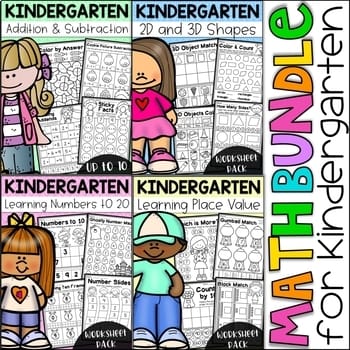




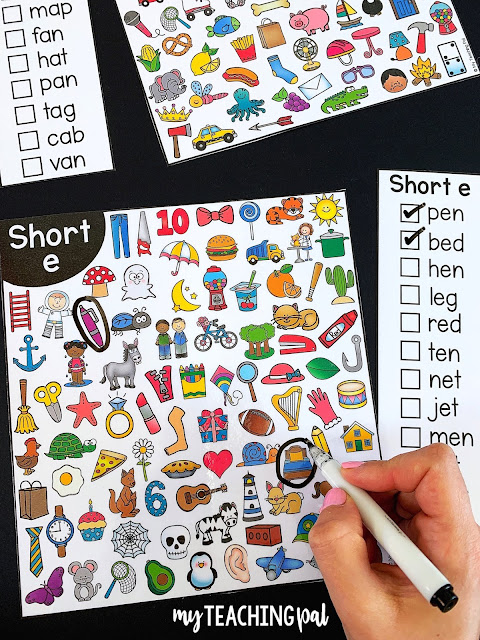
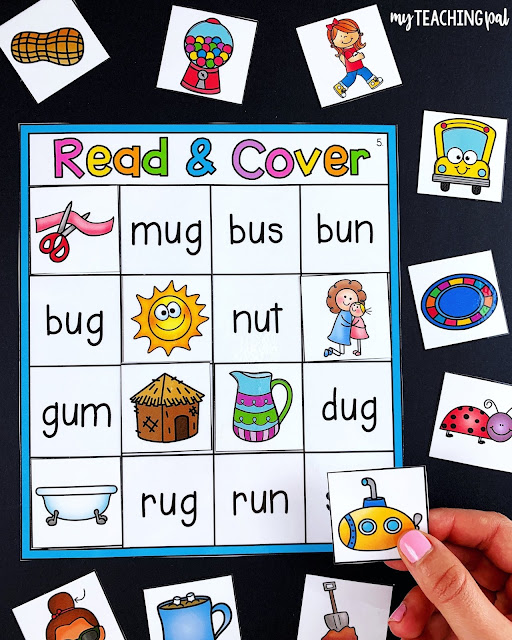
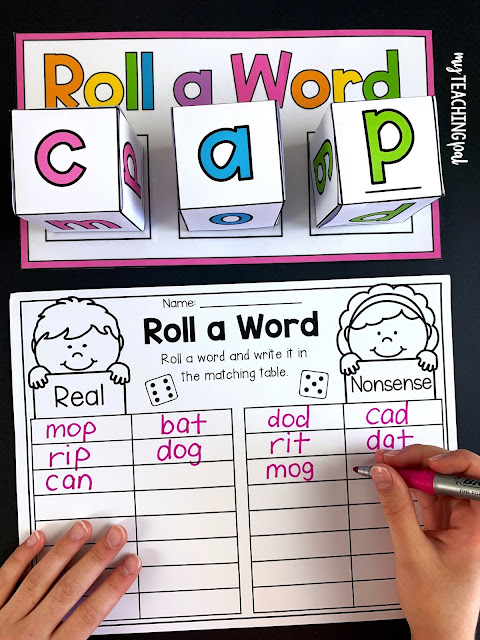

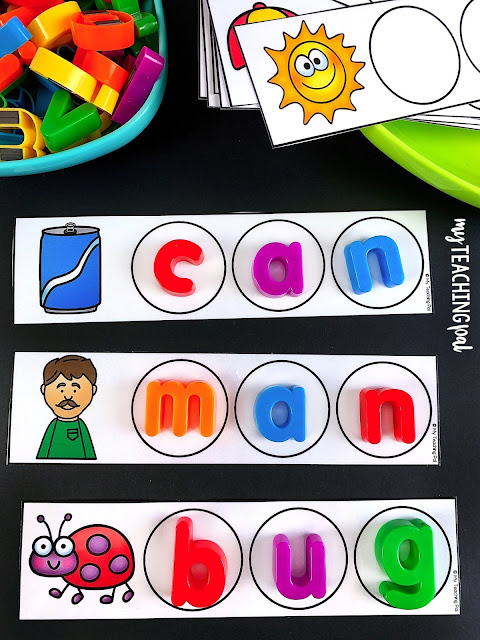
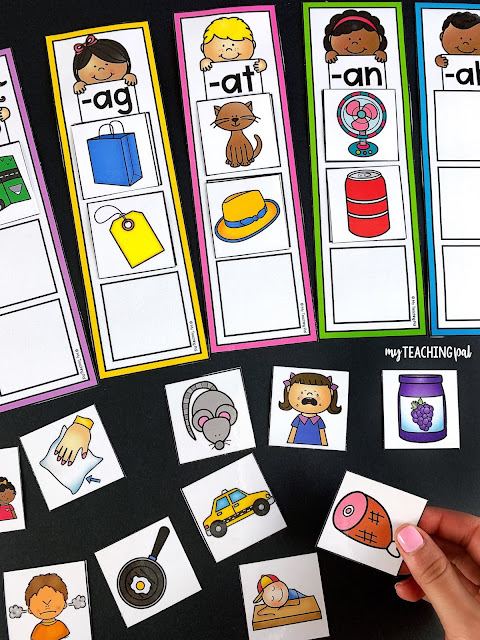

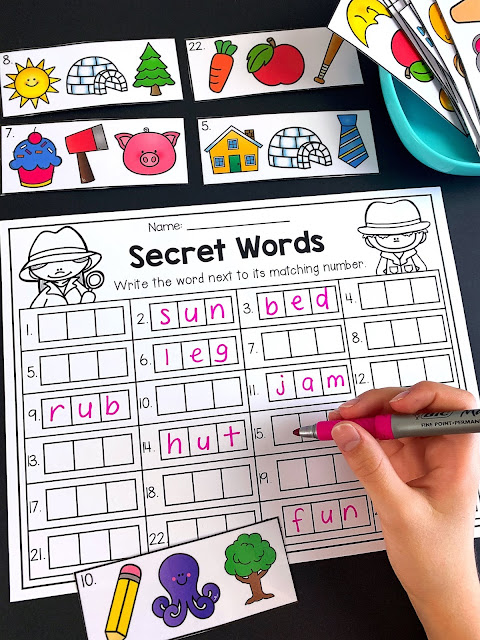
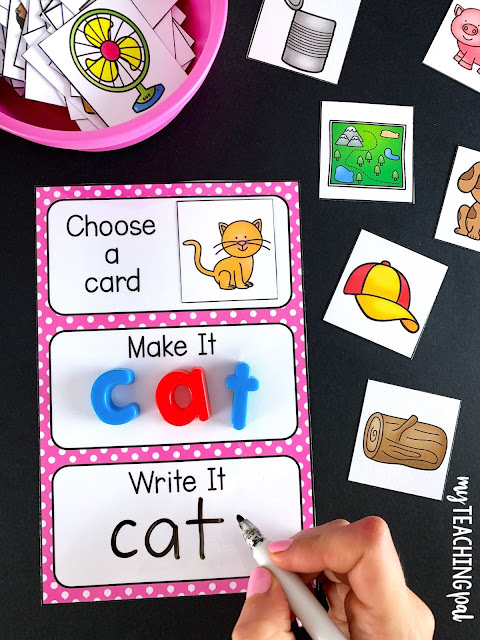
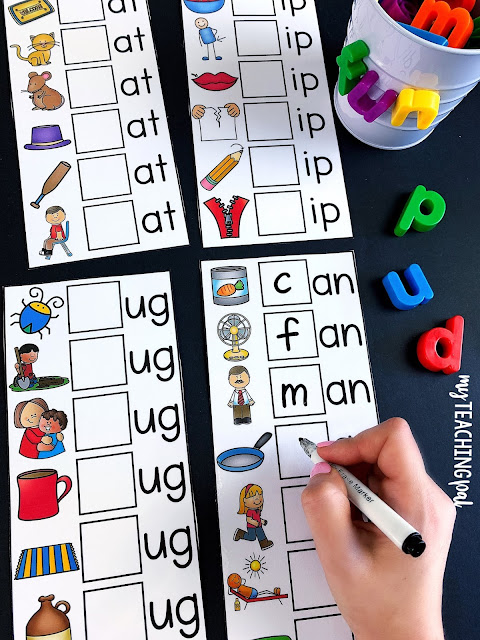




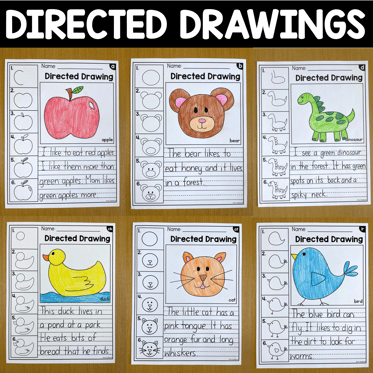


Eileen
Thank you for creating such wonderful phonic activity and sharing your work. You make a world of difference for me a mum with a special needs child by providing access to resources that is not readily available when I am. Keep up the good work and God bless you!